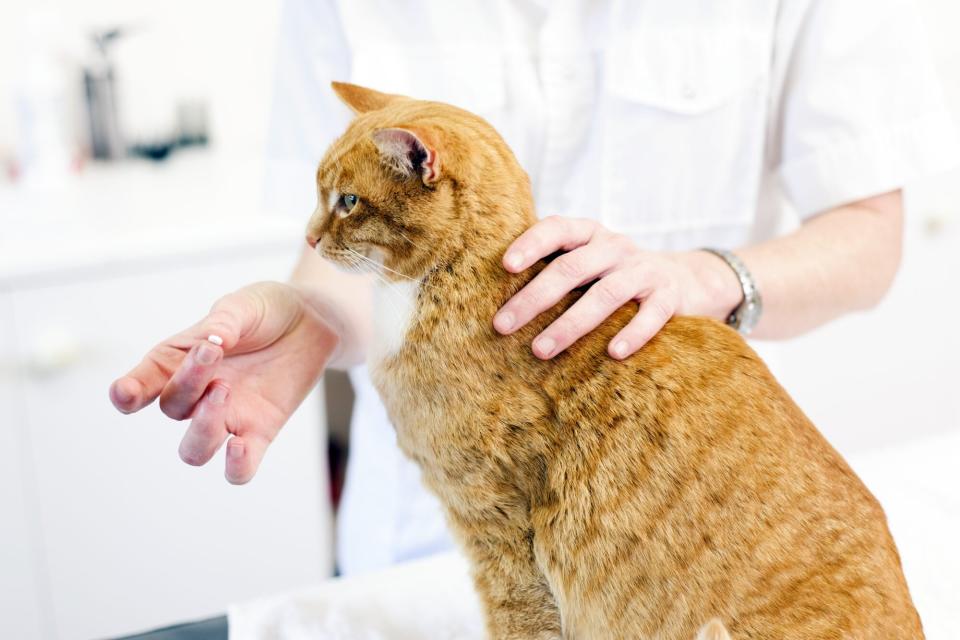Three Vet-Approved Tricks to Get Your Cat to Take Medicine
Dotdash Meredith and Yahoo Inc. may earn commission or revenue on some items through the links below.
Giving medicine to cats can be a trial of patience for most of us caretakers. But why is it so difficult? "Cats could be resistant to taking medication for a variety of reasons. They may be experiencing stress or discomfort from the administration of the medication or they might simply find the taste of the medication to be unpleasant," explains Dr. Jennifer Freeman, DVM, PetSmart's resident veterinarian and pet care expert. "Medications for cats can come in different forms (pills, tablets, liquids, and transdermal formulas) and it is important that pet parents take this into consideration when being prescribed a medication for their cat."
Dr. Freeman recommends asking your veterinarian which formulations are available and what "might work best for you and your cat based on their temperament." You should also ask for a prescription with the lowest interval dosing possible. It's much easier to give your cat medicine once a day versus two or three times. Since we can't tell our cats that the medicine is going to make them feel better, we have to find creative ways to make them take it. Check out these tips and tricks from Dr. Freeman the next time Kitty has a prescription.

subman / getty images
Related: The Best All-Natural Cat Treats to Buy Today
Hide pills in treats or food.
"There are a few ways to administer pills or tablets to cats. The easiest is to 'Trojan Horse' it and hide the full or crushed medication in a treat such as a Pill Pocket ($5.48, chewy.com), tuna juice, cream cheese, or yogurt," says Dr. Freeman. The fragrance of the yummy treat may hide the smell of the medicine. Your cat will gobble up the pill or tablet along with the treat. "Another is by using gentle restraint and a pill gun or by using quick finger work. This can be challenging, and takes some practice and a good cat in order to prevent injury and frustration," she says, so you may want to ask your veterinarian for a demonstration.
Give a taste introduction.
"To give liquid medication, you may be given a dropper or syringe to administer. You can begin by letting your cat taste the liquid to see if they take it by choice," explains Dr. Freeman. "If they refuse it, you will have to use a similar technique as for oral pilling." Some liquid medicines come in different flavors that may be more appealing to your cat, so you should always ask your veterinarian if that is an option. Your cat may love the taste of tuna. Offering her some tuna-flavored liquid medication may be all it takes for her to take it willingly and without stress.
Apply with a gentle touch.
"Transdermal formulation is applied topically to the cat's ear skin for absorption into the bloodstream," Dr. Freeman says. "Not all medications are readily absorbed this way, so be sure to ask your veterinarian if this is a viable option. You should always wear gloves or wash your hands well after applying this type of medication as to not absorb it yourself." If your cat loves a good cuddle session, you can wait until she is relaxed and purring before gently applying the medication to the skin.

